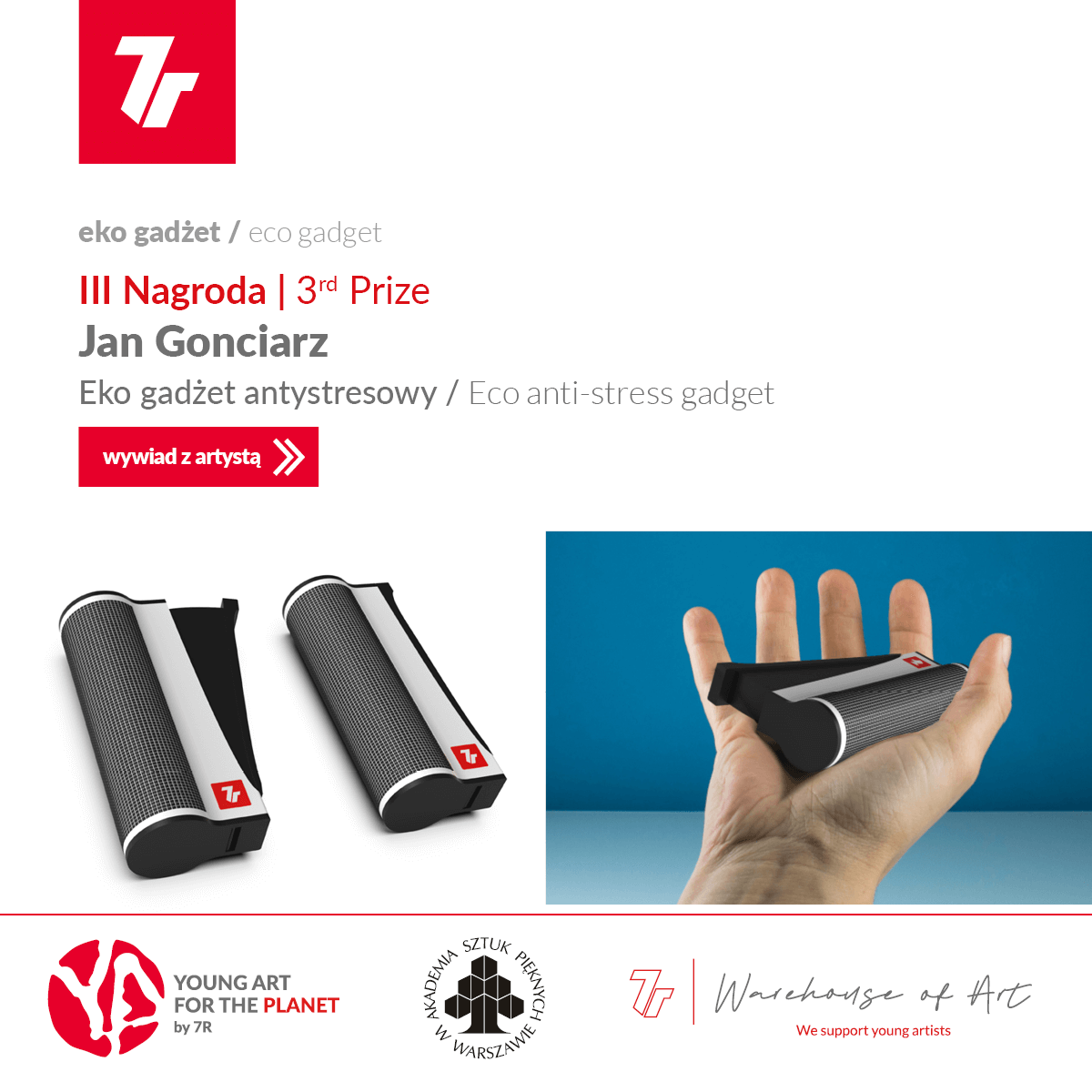Turning stress into energy

The Anti-Stress Eco-Gadget, which has won third prize in the eco-gadget category of 7R’s ‘The Warehouse of Art: Young Art for the Planet’ competition, is the brainchild of Jan Gonciarz. He explains how the idea came to him of using stress to charge such devices as smartphones.
Could you tell us something about the inspiration behind your project?
Jan Gonciarz: The natural environment is an inexhaustible source of inspiration. At the design stage of many of my ideas, I make drawings in which I’m looking for tensions in the shapes of animals or plants – and this has a decisive influence on the final appearance of the product. The issue of energy consumption is important to me and certainly inspired me when I was designing this gadget. Added to this, now that we are having to contend with instability in the fuel and energy market, ideas that help to conserve or generate energy in an alternative way are highly relevant and commendable. The design of this anti-stress gadget is based on converting the energy from the repetitive hand movements that allow you to focus and think creatively, into electricity – for charging your smartphone, for example. The aims of the competition helped me to define the target consumer. So I decided to create a device for people who have a lot of responsibility on their hands.
How does the Anti-Stress Eco-Gadget work?
After some research and testing, I noticed how much peace of mind physically repetitive activities can actually give you. Looking at how a Singer sewing machine works, I noticed how having to perform small tasks, for example, on the leg or arm of an item, can stimulate the mind to fully focus on the problem in front of us. The second fairly common aspect that I focused on was reducing motor activity. I decided that the product should be a wrist exercise tool and added a flywheel mechanism connected to a small power generator. The current resulting from squeezing the device charges its powerbank. In this way, the energy that is often generated by emotion can be converted into electricity. By squeezing the gadget, you can feel a pleasant resistance and slight vibrations caused by the movement of the mechanism.
How important is nature and the environment in your work?
Natural materials, especially wood, are very close to my heart and therefore to my work. Wood is a sustainable and virtuous material, that brings people closer to nature. It is extremely important to treat it with respect and use it thoughtfully. That is, by minimising waste during its processing, paying attention to the characteristics of each piece of wood, and taking care to make something out of it that functions as a work of art. Such an approach ensures that the final work is both durable and user-friendly.
Can artists help to raise environmental awareness?
Artists comprise a wide spectrum of people with very different skills. You don’t have to go far to find examples of art that are addressed to a variety of topics: political, global and those related to the climate crisis. When it comes to art as traditionally conceived, its activity is rather based on initiating a dialogue, drawing attention to environmental issues; but design, as a field that combines art with industry, has a unique opportunity to influence the climate debate. The more climate- and resource-friendly projects that industry has at its disposal, the easier it will be for businesses and consumers to make the right choices for the planet.
About Warehouse of Art
The 7R Warehouse of art ‘Young art for the planet’ competition was open to students and graduates of Warsaw’s Academy of Fine Arts. Its guiding motto was “Technology, Ecology, People, Coexistence”. The competition requirement was to create a project of utility art with an ecological theme in one of three categories: Ergonomic seating, murals on the side of a fire water tank and an ecological 7R gadget. In total, 26 entries were submitted. The awarded projects are available at 7rwarehouseofart.pl.





